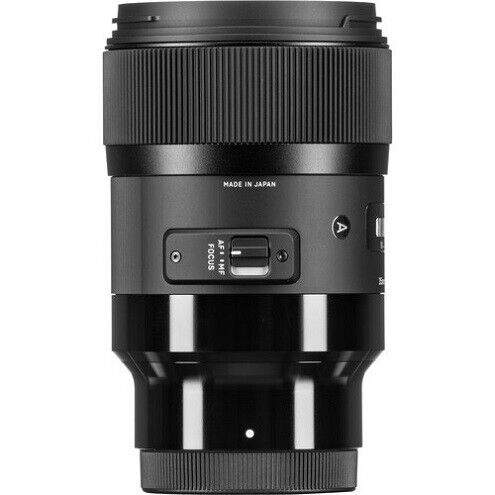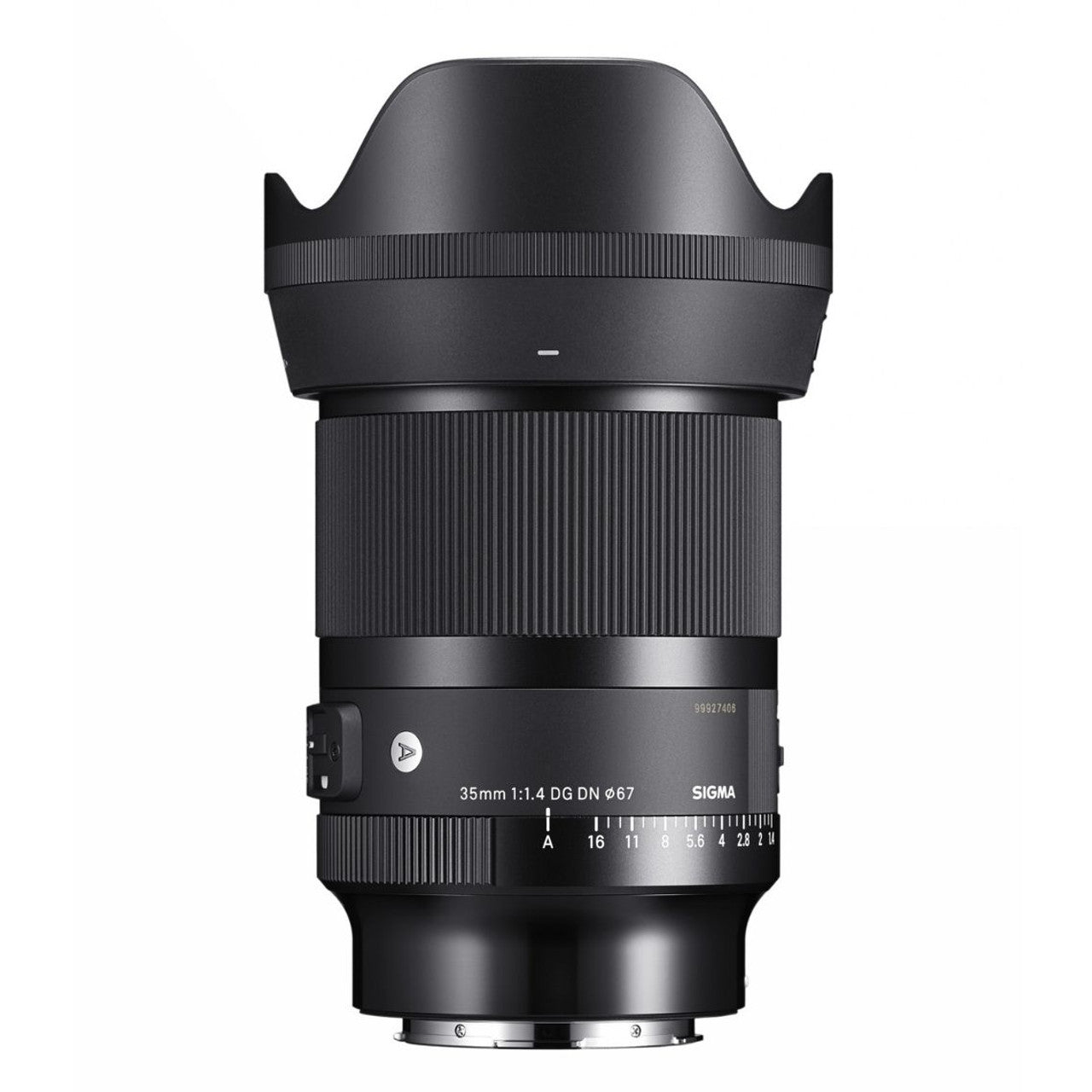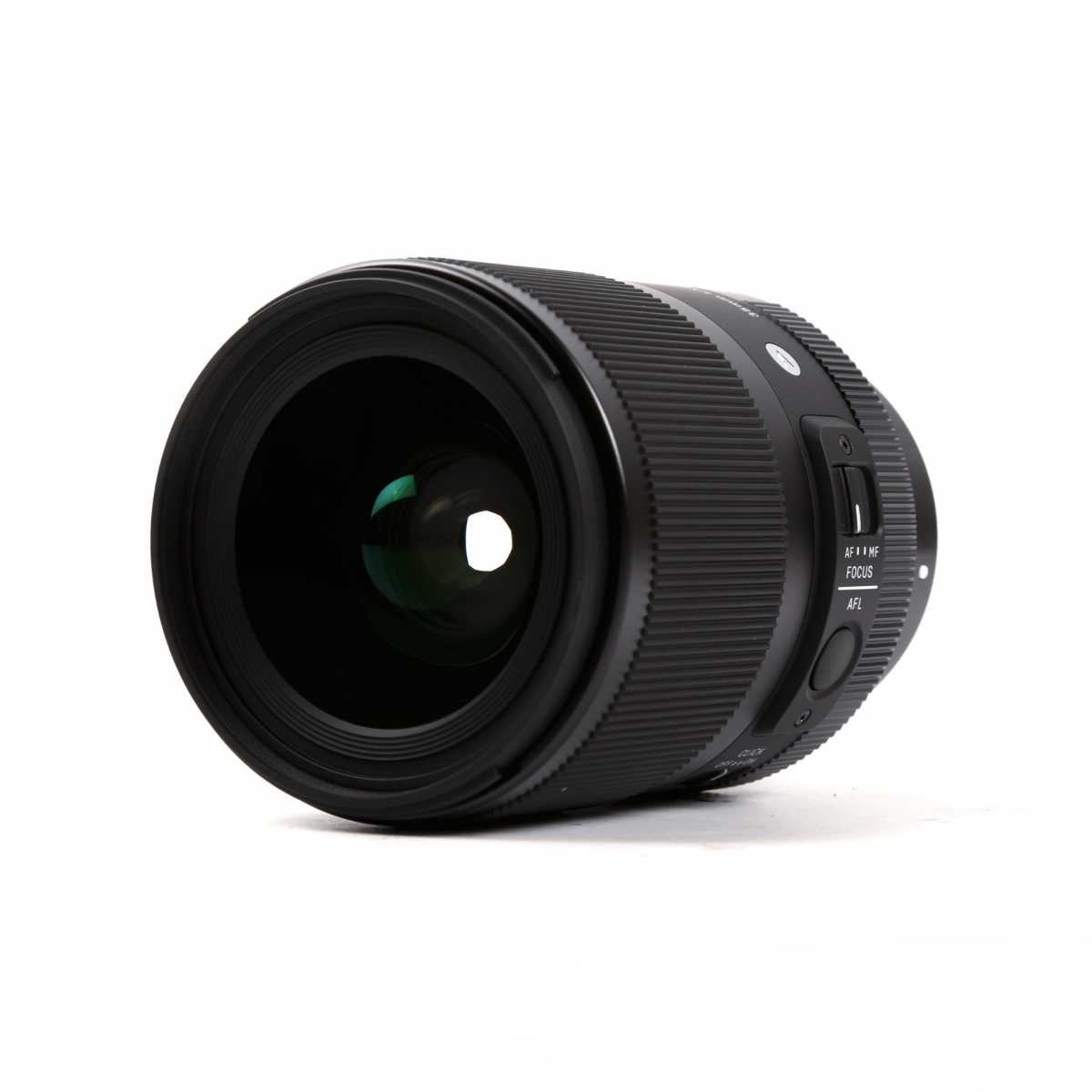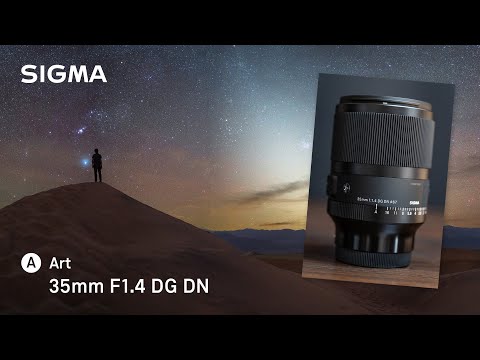Product Description
Sigma 35mm F1.4 DG DN Mirrorless Art Lens - Sony FE
Exceptional optical performance
Central to the design of the 35mm F1.4 DG DN | Art is its sophisticated optical performance, which is consistent with the development of all Art line lenses. The lens incorporates 15 elements in 11 groups. With two Special Low Dispersion (SLD) elements, an Extraordinary Low Dispersion (ELD) element, an ‘F’ Low Dispersion (FLD) element and two aspherical elements, as well as other high-performance glass, the lens’ advanced optical construction utilizes SIGMA’s state-of-the-art optical design technology, minimizing all types of aberration including axial chromatic aberration, which cannot be corrected in-camera.
In spite of having a very wide aperture of F1.4, the lens is able to control sagittal coma flare extremely well even wide open, stopping bright points of light from flaring out near the edges of the frame. This will be particularly appealing to night sky photographers.
Owing to its 11 rounded diaphragm blades, the lens displays smooth, round bokeh so that out-of-focus areas are not distracting. This makes the 35mm F1.4 DG DN | Art well-suited to portraits, supported by its ultra-sharp image quality and minimal colour bleeding. It also performs very well in backlit conditions thanks to SIGMA’s anti-ghosting and anti-flare technology that it has cultivated through countless simulations and real-life testing in our many years of lens development. This keeps shots in high contrast and free of excessive flare even when working in difficult light.
35mm F1.4 DG DN | Art Lens Construction
- SLD glass
- FLD glass
- ELD glass
- ASPHERICAL LENS
Fast and quiet AF in a compact body
The focusing mechanism in the SIGMA 35mm F1.4 DG DN | Art features a stepping motor. This motor controls a focusing lens group composed of a single, lightweight element, which means AF is responsive and quiet and is able to keep track of moving objects very effectively. Manual focusing is smooth and precise, but with the right amount of resistance for filmmakers. Certainly, this lens has a focus mode switch on the body.
The SIGMA 35mm F1.4 DG DN | Art wholly embraces the Art line concept, which is “designed with a focus on sophisticated optical performance”. This—paired with its advanced autofocus performance and the convenience of compact size—makes for a lens that raises the standards.
For full specifications click Here

























